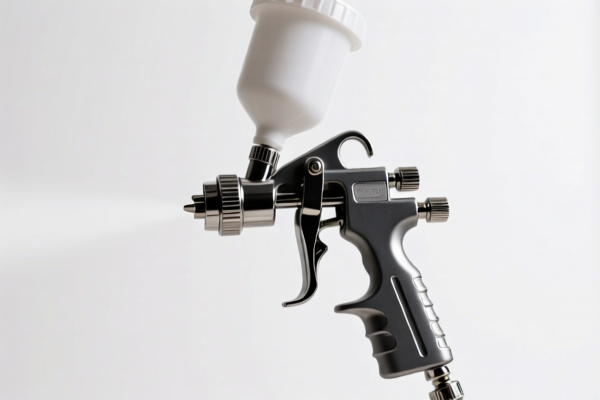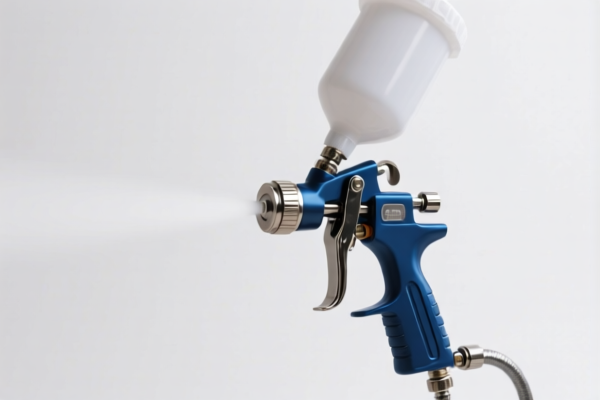| HS Code | Official Doc | Tariff Rate | Origin | Destination | Effective Date |
|---|---|---|---|---|---|
| 8424209000 | Doc | 55.0% | CN | US | 2025-05-12 |
| 8424899000 | Doc | 56.8% | CN | US | 2025-05-12 |
| 8479899560 | Doc | 32.5% | CN | US | 2025-05-12 |
| 6307909850 | Doc | 37.0% | CN | US | 2025-05-12 |
| 8714933500 | Doc | 65.0% | CN | US | 2025-05-12 |




Spray Paint
Spray paint, also known as aerosol paint, is a paint that is propelled from a pressurized container with a propellant gas. It is commonly used for a wide variety of applications, ranging from artistic expression to protective coatings and marking.
Material Composition
Spray paint typically consists of four main components:
- Pigments: Provide color and opacity. These can be organic or inorganic, and determine the paint's hue, saturation, and brightness.
- Resin (Binder): Forms the film that adheres the pigment to the surface. Common resins include acrylic, alkyd, epoxy, polyurethane, and enamel. The resin type dictates the paint's durability, flexibility, and resistance properties.
- Solvent: Dissolves the resin and pigment, allowing for even application. Solvents evaporate after application, leaving the resin and pigment behind. Water-based paints use water as the solvent, while solvent-based paints utilize materials like mineral spirits, acetone, or xylene.
- Propellant: A gas (historically chlorofluorocarbons (CFCs), now typically hydrocarbons like propane, butane, and isobutane) that creates the pressure to atomize and expel the paint.
Purpose & Function
The primary function of spray paint is to apply a liquid coating to a surface quickly and evenly. It offers several advantages:
- Fast Application: Covers large areas efficiently.
- Versatility: Can be applied to a variety of surfaces including metal, wood, plastic, glass, and fabric (depending on the paint formulation).
- Uniform Finish: Provides a consistent coat, minimizing brush strokes or roller marks.
- Special Effects: Available in a wide range of colors, finishes (gloss, matte, satin, metallic, fluorescent), and specialized formulations for unique effects.
Usage Scenarios
- Art & Graffiti: Widely used by artists for murals, street art, and canvas paintings.
- DIY Projects: Popular for furniture refinishing, home decor, and craft projects.
- Automotive: Used for touch-ups, custom paint jobs, and undercoating.
- Industrial Coatings: Applied for corrosion protection, marking, and labeling.
- Maintenance & Repair: Used for painting fences, railings, and other outdoor structures.
Common Types
- Acrylic Spray Paint: Water-based, fast-drying, low odor, good for general use, less durable than solvent-based options.
- Enamel Spray Paint: Solvent-based, durable, glossy finish, good for metal surfaces, requires longer drying times.
- Lacquer Spray Paint: Solvent-based, fast-drying, high gloss, used for furniture and automotive applications, often requires multiple coats.
- Primer: Used as a base coat to improve adhesion and provide a uniform surface for the top coat.
- Specialty Paints: Include paints for specific materials (e.g., stone, glass, fabric), temperature resistance, or effects (e.g., chalkboard paint, glitter paint).
- Rust-Oleum & Krylon: Popular brands known for their wide range of products and formulations.
Spray paint typically consists of paints dispersed or dissolved in a nonaqueous medium, applied via aerosol for coating surfaces. Based on the provided information, several HS codes may be relevant.
-
3208100000: Paints and varnishes (including enamels and lacquers) based on synthetic polymers or chemically modified natural polymers, dispersed or dissolved in a nonaqueous medium; solutions as defined in note 4 to this chapter: Based on polyesters. This code applies if the spray paint is polyester-based. The first two digits (32) indicate the chapter for paints and varnishes. The next four digits (0810) specify paints and varnishes based on synthetic or chemically modified natural polymers in nonaqueous media, specifically those based on polyesters. The final two digits (00) denote the specific tariff item. Basic duty is 3.7%, with an additional 25.0% tariff, increasing to 30.0% after April 2, 2025, resulting in a total tariff of 58.7%.
-
3208200000: Paints and varnishes (including enamels and lacquers) based on synthetic polymers or chemically modified natural polymers, dispersed or dissolved in a nonaqueous medium; solutions as defined in note 4 to this chapter: Based on acrylic or vinyl polymers. This code is applicable if the spray paint is based on acrylic or vinyl polymers. The first two digits (32) represent the paints and varnishes chapter. The next four digits (0820) specify paints and varnishes based on synthetic or chemically modified natural polymers in nonaqueous media, specifically those based on acrylic or vinyl polymers. The final two digits (00) denote the specific tariff item. Basic duty is 3.6%, with an additional 25.0% tariff, increasing to 30.0% after April 2, 2025, resulting in a total tariff of 58.6%.
-
3814001000: Organic composite solvents and thinners, not elsewhere specified or included; prepared paint or varnish removers: Containing 5 percent or more but not more than 25 percent by weight of one or more aromatic or modified aromatic substances. If the spray paint includes organic composite solvents and thinners with aromatic content between 5% and 25%, this code may apply. The first two digits (38) indicate the chapter for chemical products. The next four digits (1400) specify organic composite solvents and thinners. The final four digits (1000) denote the specific tariff item. Basic duty is 6.5%, with an additional 25.0% tariff, increasing to 30.0% after April 2, 2025, resulting in a total tariff of 61.5%.
-
3814002000: Organic composite solvents and thinners, not elsewhere specified or included; prepared paint or varnish removers: Containing more than 25 percent by weight of one or more aromatic or modified aromatic substances. If the spray paint includes organic composite solvents and thinners with more than 25% aromatic content, this code may apply. The first two digits (38) indicate the chapter for chemical products. The next four digits (1400) specify organic composite solvents and thinners. The final four digits (2000) denote the specific tariff item. Basic duty is 6.5%, with an additional 25.0% tariff, increasing to 30.0% after April 2, 2025, resulting in a total tariff of 61.5%.
It is important to determine the specific polymer base (polyester, acrylic, vinyl, etc.) and the composition of any solvents used to accurately classify the spray paint.
Customer Reviews
The detailed breakdown of the different HS codes and their corresponding tariff rates was very useful. I was able to quickly find the right classification for my product.
I was looking for HS code information for exporting spray paint to the US, and this page had exactly what I needed. The links to the official documents were a big help.
The effective date for each HS code is a great detail to have. It helps me ensure that the tariff rates I'm using are up to date.
The information on the material composition of spray paint was really helpful. I now understand better how to classify my product under the right HS code.
The page had a lot of useful data, but the technical language made it a bit hard to understand without prior knowledge. A bit more explanation would have helped.